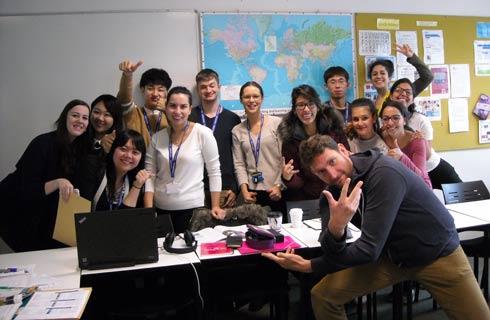- IDP China>
- 课程库>
- 商科与管理>
- 数学与统计学>
- 数学>
- Master of Mathematics in Combinatorics and Optimization - Co-operative Program (Cryptography)
组合与优化数学硕士[合作社]-密码学
Master of Mathematics in Combinatorics and Optimization - Co-operative Program (Cryptography)

学历文凭
Masters Degree

专业院系
Department of Combinatorics and Optimization

开学时间

课程时长

课程学费

国际学生入学条件
Applicants from foreign countries must normally take the Graduate Record Examinations (GRE) General Test and Subject Tests.
Three references, normally from academic sources
Proof of English language proficiency, if applicable. TOEFL 90 (writing 25, speaking 25), IELTS 7.0 (writing 6.5, speaking 6.5)
IDP—雅思考试联合主办方

雅思考试总分
7.0
了解更多
雅思考试指南
- 雅思总分:7
- 托福网考总分:90
- 托福笔试总分:160
- 其他语言考试:PTE (Academic) - 63 (writing 65, speaking 65)
CRICOS代码:
申请截止日期: 请与IDP顾问联系以获取详细信息。
课程简介
Combinatorics is the study of discrete structures and their properties. Many modern scientific advances have employed combinatorial structures to model the physical world, and recent advances in computational technology have made such investigations feasible. In particular, since computers process discrete data, combinatorics has become indispensable to computer science. Optimization, or mathematical programming, is the study of maximizing and minimizing functions subject to specified boundary conditions or constraints. With the emergence of computers, optimization experienced a dramatic growth as a mathematical theory, enhancing both combinatorics and classical analysis. The functions to be optimized arise in engineering, the physical and management sciences, and in various branches of mathematics. In the co-op option, students spend one or more terms working in industry, thus gaining valuable experience while earning their degree. Recently, the co-op option has been undertaken by students whose research focuses on financial applications of optimization. It is recommended that students interested in this option apply for the ordinary (non-co-op) MMath program and then contact the graduate officer about transferring to the co-op program subsequent to their admission.<br><br>In classical cryptography, some algorithm, depending on a secret piece of information called the key, which had to be exchanged in secret in advance of communication, was used to scramble and descramble messages. (Note that, in a properly designed system, the secrecy should rely only on the key. It should be assumed that the algorithm is known to the opponent.) In 1976, a new type of cryptosystem, called an asymmetric or public-key system was conceived. In these systems, the roles of encryption and decryption are sufficiently separated that the key for one of these functions can be publicly disclosed, while the other can be maintained in secret. This eliminates the need for the exchange of keys in secret prior to communication. These constructions are based on the computational infeasibility of solving certain hard mathematical problems such as integer factorization. The search for appropriate hard problems and the design and analysis of related public key systems has given rise to a very active and stimulating area of research. Research, both theoretical and practical, in various areas of cryptography, security and privacy is being undertaken at the Centre for Applied Cryptographic Research (CACR) at Waterloo. Some areas of focus for cryptographers in the C&O department include elliptic and hyperelliptic curve cryptography, pairing-based cryptography, quantum-safe cryptography, and the design and analysis of cryptographic protocols.
相关申请
 预科
预科 奖学金
奖学金 实习机会
实习机会 在校学习
在校学习 跨境学习
跨境学习 校园授课-线上开始
校园授课-线上开始 在线/远程学习
在线/远程学习
学校排名

世界排名201
数据源:泰晤士高等教育世界大学排名
关于滑铁卢大学

滑铁卢大学是加拿大滑铁卢市的一家著名大学,是一所以研究为主的中等大小的公立大学,创建于1957年。以数学、计算机科学、工程学而闻名。该校位于安大略省的西南面的滑铁卢市,占地面积约为1000英亩。滑铁卢大学成立至今,仅数十年便跻身加拿大名校之列,是加拿大发展最快的学校。2011年到2013年,该校一直稳居麦克林杂志评选的加拿大综合性大学排名的第三位,是北美地区最优大学之一,其数学,计算机科学和工程学科教学水平居世界前列。特别是做为北美地区第一个经认可建立数学系的大学,拥有世界上最大的数学系以及世界上最大的合作办学项目。学校共授予100多个本科学位专业,28种硕士及博士学位专业,学校的代表队曾多次获得ACM 国际大学生程序设计竞赛的冠军。
本校相关课程

系统设计工程哲学博士
学历文凭
Ph.D.
开学日期
课程费用总额


系统设计工程工程学硕士
学历文凭
Masters Degree
开学日期
课程费用总额


社会学文学硕士[仅课程]
学历文凭
Masters Degree
开学日期
课程费用总额


Doctor of Philosophy in Religious Studies
学历文凭
Ph.D.
开学日期
课程费用总额


运动机能学博士-工作与健康
学历文凭
Ph.D.
开学日期
课程费用总额


娱乐与休闲研究哲学博士
学历文凭
Ph.D.
开学日期
课程费用总额

其他相关课程

纯粹数学哲学博士
 滑铁卢大学
滑铁卢大学学历文凭
Ph.D.
开学日期
课程费用总额


纯粹数学数学硕士
 滑铁卢大学
滑铁卢大学学历文凭
Masters Degree
开学日期
课程费用总额


组合与优化哲学博士-量子信息
 滑铁卢大学
滑铁卢大学学历文凭
Ph.D.
开学日期
课程费用总额


组合与优化数学硕士-量子信息
 滑铁卢大学
滑铁卢大学学历文凭
Masters Degree
开学日期
课程费用总额


组合与优化数学硕士
 滑铁卢大学
滑铁卢大学学历文凭
Masters Degree
开学日期
课程费用总额


数学理学学士
 圣弗朗西斯泽维尔大学
圣弗朗西斯泽维尔大学学历文凭
Bachelor Degree
开学日期
课程费用总额


























